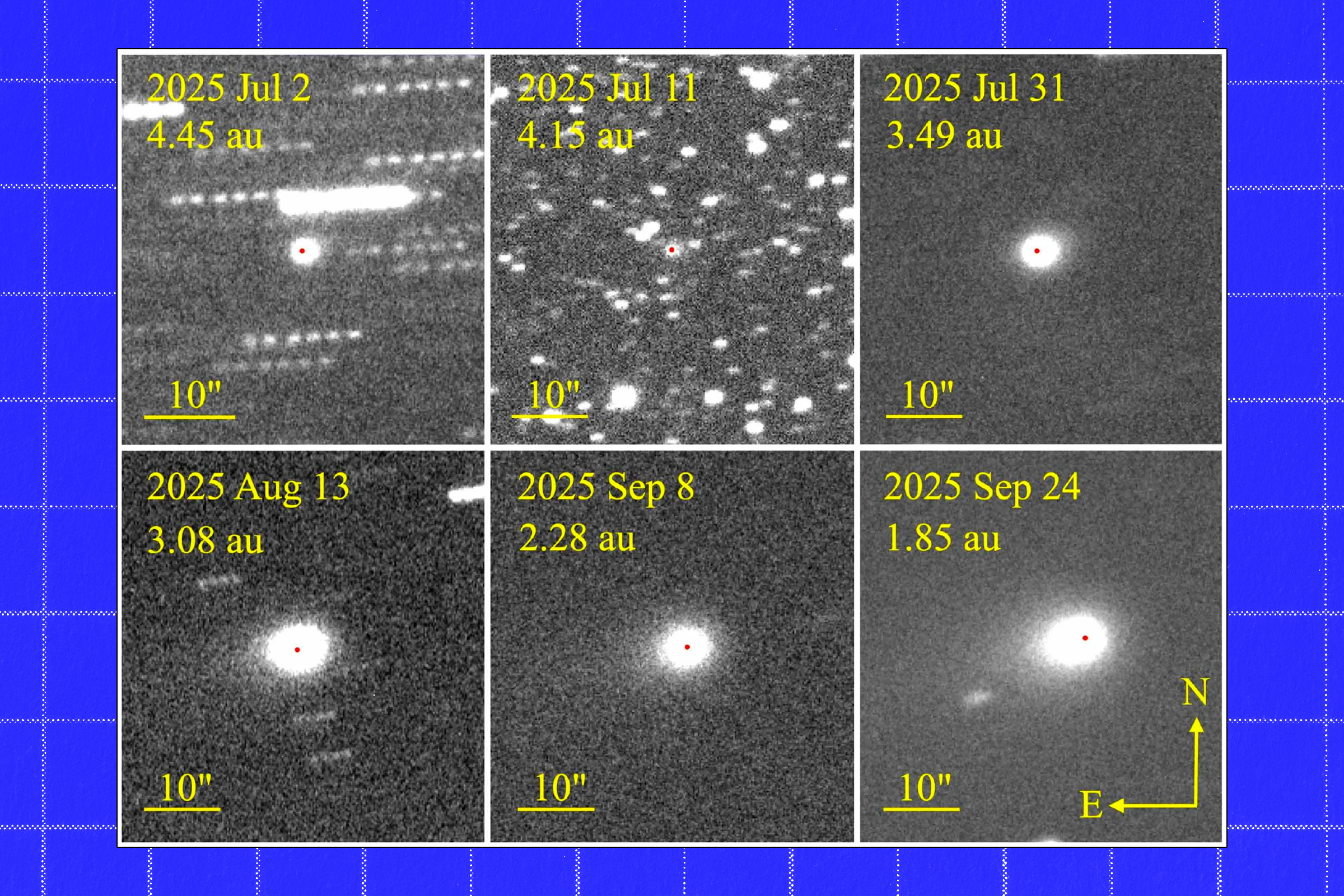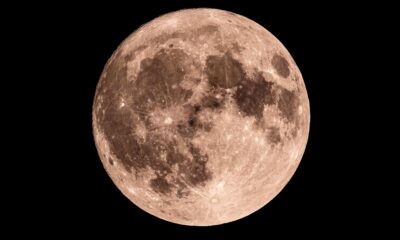Science
Scientists Examine Interstellar Object 3I-ATLAS for Signs of Alien Activity

A newly identified interstellar object, designated 3I-ATLAS, has sparked significant interest in the astronomical community since its discovery in early July 2023. This object, believed to be the third known interstellar entity visiting our solar system, is currently drawing attention for its unusual behavior as it approaches the Sun.
While most astronomers classify 3I-ATLAS as an interstellar comet, Avi Loeb, an astronomy researcher from Harvard University, has proposed a more controversial theory. He suggests that the object could be a spacecraft from an advanced alien civilization. This assertion has faced skepticism from many of his peers, yet Loeb continues to advocate for his perspective, adding to the intrigue surrounding the object.
Recent observations from the Nordic Optical Telescope in the Canary Islands indicate a potentially significant change in 3I-ATLAS. Images captured by the telescope reveal that the debris tail, which had formed as the object approached the Sun, has shifted direction and is now oriented towards the Sun. This phenomenon, known as an “anti-tail,” has been documented in various comets over the years and is typically explained by the relative positions of the observer and the object, creating an optical illusion affected by solar gravity.
Loeb, however, proposes an alternative explanation. In his latest blog post, he suggests that the anti-tail could indicate that the object is applying “braking thrust,” effectively slowing down to extend its time within our solar system. He elaborates that if 3I-ATLAS is indeed a spacecraft, the transition from an anti-tail to a tail would be expected as it reaches perihelion, the point in its orbit closest to the Sun. Loeb states, “If the object is an alien spacecraft slowing down, and the anti-tail is braking thrust, then this change from anti-tail to tail would be entirely expected near perihelion.”
The implications of this theory are profound. If true, it could represent a technosignature, or a sign of intelligent maneuvering, suggesting that the object might be aiming for a stable orbit between Mars and Jupiter. Such a discovery would challenge conventional understandings of interstellar travel and the existence of extraterrestrial life.
The astronomical community awaits further observations to clarify the nature of 3I-ATLAS. The object is not expected to be visible again until December 19, 2023, which will provide an opportunity to determine if its trajectory has indeed been altered. Until then, scientists will continue to analyze available data, hoping to unravel the mystery surrounding this intriguing visitor from beyond our solar system.
As researchers delve deeper into the characteristics of 3I-ATLAS, the potential for groundbreaking discoveries remains high, whether the object turns out to be an alien craft or simply an inert mass of cosmic debris. The excitement surrounding this interstellar visitor illustrates humanity’s enduring curiosity about the universe and the possibilities that lie beyond our own solar system.
-

 World1 week ago
World1 week agoMass Production of F-35 Fighter Jet Drives Down Costs
-

 World1 week ago
World1 week agoGlobal Air Forces Ranked by Annual Defense Budgets in 2025
-

 Top Stories1 week ago
Top Stories1 week agoDirecTV to Launch AI-Driven Ads with User Likenesses in 2026
-

 Top Stories1 week ago
Top Stories1 week agoNew ‘Star Trek: Voyager’ Game Demo Released, Players Test Limits
-

 Entertainment1 week ago
Entertainment1 week agoFreeport Art Gallery Transforms Waste into Creative Masterpieces
-

 Science1 week ago
Science1 week agoTime Crystals Revolutionize Quantum Computing Potential
-

 Lifestyle1 week ago
Lifestyle1 week agoDiscover Reese Witherspoon’s Chic Dining Room Style for Under $25
-

 World1 week ago
World1 week agoElectrification Challenges Demand Advanced Multiphysics Modeling
-

 Health1 week ago
Health1 week agoGavin Newsom Critiques Trump’s Health and National Guard Plans
-

 Lifestyle1 week ago
Lifestyle1 week agoLia Thomas Honored with ‘Voice of Inspiration’ Award at Dodgers Event
-

 Entertainment1 week ago
Entertainment1 week agoFast & Furious Coaster Hits the Track at Universal Studios
-

 Science1 week ago
Science1 week agoWaning Crescent Moon: What to Expect on October 17









